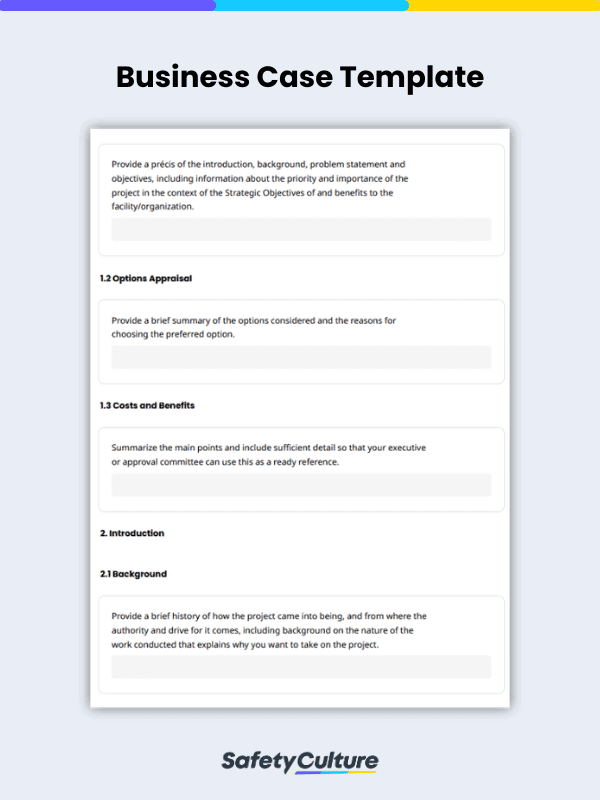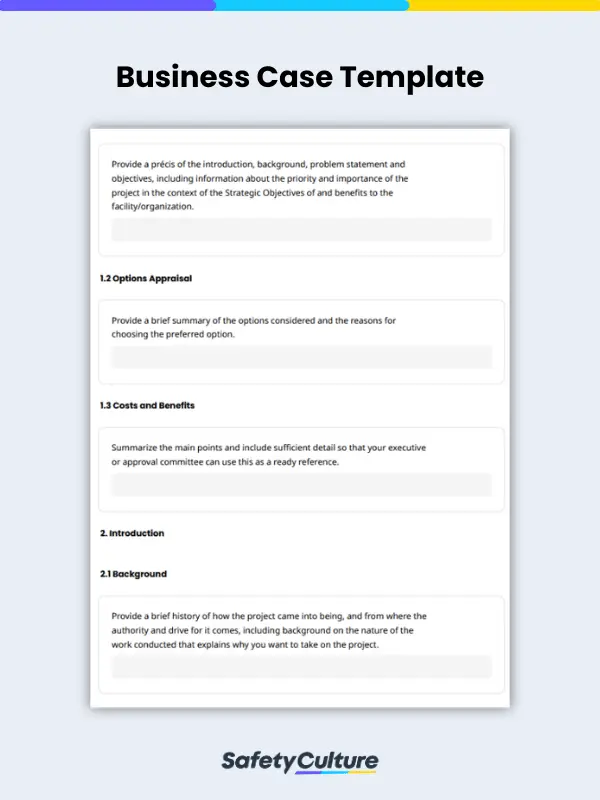What Is a Business Case Template?
A business case template is a tool used by project managers to write an effective business case with ease. A simple business case template, also known as a business use case template, is frequently displayed as a one-page Word or PDF file with elements like the problem definition, alternative solutions, and conclusion. In a corporate setting, a business case serves as a formal document of the justification for undertaking a project. Writing a business case template becomes a breeze with the help of digital operations management platforms.
Why You Need a Business Case
A business case provides data-driven reasons to implement an idea by establishing its context, presenting a set of options, and offering a rationale for the preferred solution. Decision makers and key stakeholders leverage on a business case to evaluate the costs, benefits, and risks of taking a certain action. A good business case enables the company to explore the high-level options for meeting business needs early in a project. It also demonstrates management commitment toward evidence-based decision-making, transparency, and accountability. This template also proves to be a useful tool when creating a Project Initiation Document (PID) template.
The Most Important Components of a Business Case
The parts of a business case template vary based on different factors such as industry use case, company requirements, and client specifications. For example, business case templates used in project management normally contain general elements such as the executive summary and project overview, while an agile or lean business case template used in manufacturing typically requires specific items such as non-functional requirements and minimum viable product features. Whatever the use case, here are three of the most important components of a business case:
1. Problem Statement
This section defines the problem that the business case intends to address. The business problem usually involves a process, technology, product, or service along with the technical obstacles that have to be tackled. When describing the problem, minimize using jargon and keep it concise yet comprehensive enough that stakeholders immediately recognize the problem’s subject matter. It is crucial to keep in mind that any discussion about potential solutions should not be covered here.
2. Solution Options
This section reveals a number of alternative options that have been considered to solve the problem, including the status quo. The value proposition of each suggestion should not be based on mere speculation, but it should be backed up by reliable data. Each potential solution should illustrate its financial implications, perceived benefits, and associated risks to facilitate a more systematic analysis.
3. Conclusion or Rationale
This section indicates the best option after a comparison of all the alternatives. The recommendation should clearly summarize the reasons for moving forward with the project and show the vision for the project’s future. It is essential that the conclusion portrays only the necessary details and its tone remains consistent with the other aspects of the business case.




